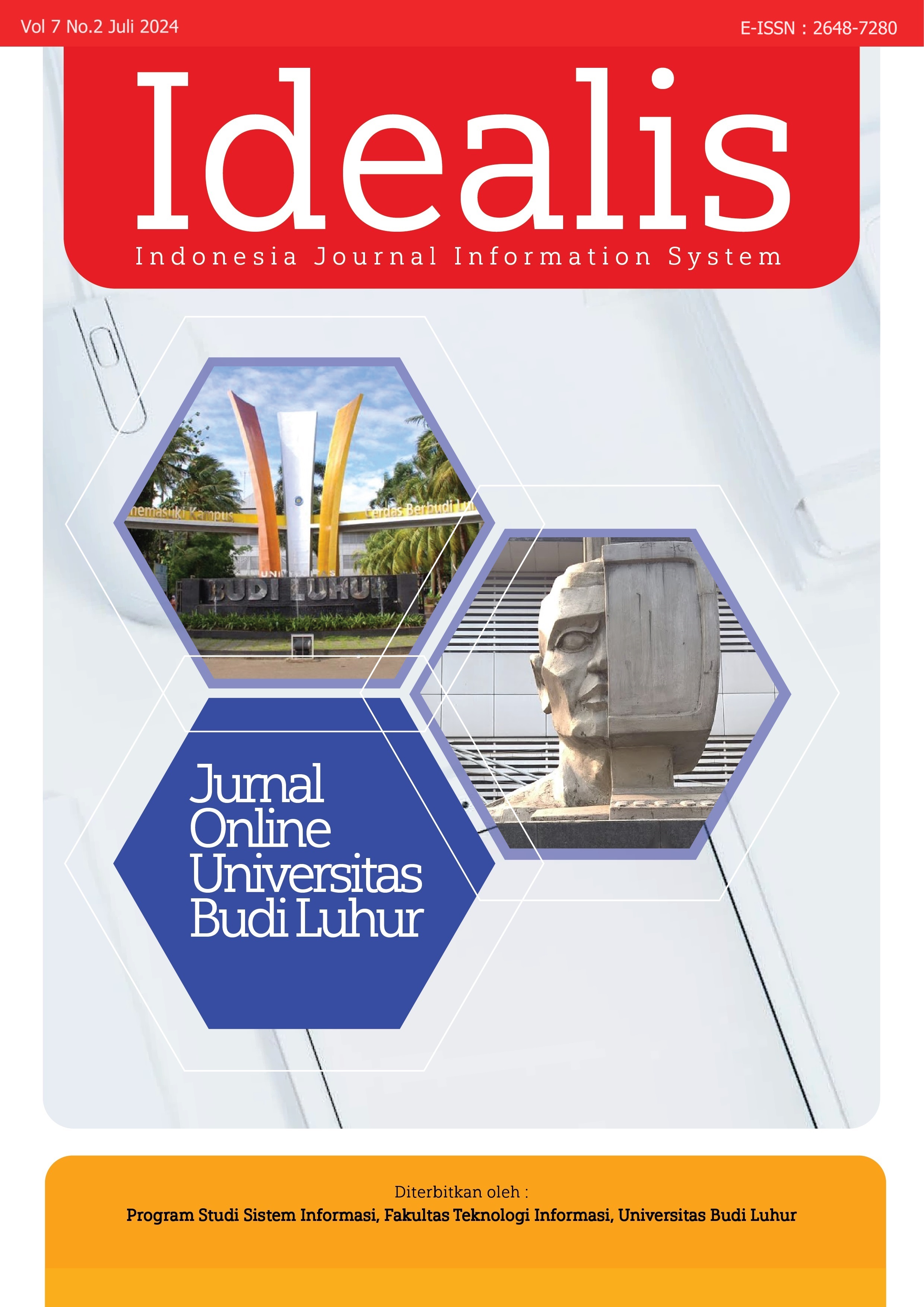EVALUASI KEBERGUNAAN PLATFORM PEMBELAJARAN DIGITAL SEKOLAH AL-FITYAN MENGGUNAKAN METODE SYSTEM USABILITY SCALE
Abstract
LMS AFDAL is a learning system that is applied within the scope of SMPIT Al-Fityan School Gowa. This LMS is used to facilitate modern learning. Evaluation of the AFDAL LMS is the first step to assess whether the LMS is well received or not by users. There are many approaches that can be taken in evaluating, one of which is usability evaluation. This study aims to determine the level of usability based on the System Usability Scale method with five variables, namely learnability, efficiency, memorability, errors, and satisfaction with 10 statements as a measure of quality in terms of the usability of the LMS. This research was conducted by distributing questionnaires using google form to 306 respondents consisting of teachers and students via whatsapp. Data processing uses IBM SPSS V26 and Microsoft Excel 2019. The results of the validity and reliability tests are declared valid and reliable. The results of the SUS test show that the final SUS value of 306 respondents' responses is 64.6, according to the rules of SUS interpretation that the score is 64.6 for the Acceptability Ranges level, namely Marginal (quite acceptable), the Grade Scale results in terms of user acceptance levels are included in the C- level, and Adjectives The rating is included in the OK category. These results indicate that the AFDAL LMS is quite accepted by its users, but this figure is quite low so that some improvements are needed to make it even better.
Downloads
References
[2] A. Fatmawati, “Evaluasi Usability pada Learning Management System OpenLearning Menggunakan System Usability Scale,” INOVTEK Polbeng - Seri Informatika, vol. 6, no. 1, p. 120, Jun. 2021, doi: 10.35314/isi.v6i1.1881.
[3] F. G. Sembodo, G. F. Fitriana, and N. A. Prasetyo, “Evaluasi Usability Website Shopee Menggunakan System Usability Scale (SUS),” Journal of Applied Informatics and Computing, vol. 5, no. 2, pp. 146–150, Nov. 2021, doi: 10.30871/jaic.v5i2.3293.
[4] A. W. Soejono, A. Setyanto, and A. F. Sofyan, “Evaluasi Usability Website UNRIYO Menggunakan System Usability Scale (Studi Kasus: Website UNRIYO),” Respati, vol. 13, no. 1, Mar. 2018, doi: 10.35842/jtir.v13i1.213.
[5] Y. Sriyeni, “Analisis Usability Aplikasi Investasi Digital Menggunakan Metode Heuristic Evaluation dan System Usability Scale,” Jurnal Ilmiah Informatika Global, vol. 13, no. 2, Aug. 2022, doi: 10.36982/jiig.v13i2.2294.
[6] C. Damayanti, A. Triayudi, and I. D. Sholihati, “Analisis UI/UX Untuk Perancangan Website Apotek dengan Metode Human Centered Design dan System Usability Scale,” Jurnal Media Informatika Budidarma, vol. 6, no. 1, p. 551, Jan. 2022, doi: 10.30865/mib.v6i1.3526.
[7] S. Elfrida and G. Brotosaputro, “Penerapan Metode Analitycal Hierarchy Process Untuk Pemilihan Siswa Terbaik Pada SMP Manba’ul Ulum Asshiddiqiyah Jakarta,” IDEALIS : InDonEsiA journaL Information System, vol. 3, no. 1, pp. 392–398, Feb. 2020, doi: 10.36080/idealis.v3i1.1944.
[8] H. Irawan, I. Irawan, and J. Christian, “Penerapan Metode HANLON Dalam Memprioritaskan Pengembangan Aplikasi Sistem Informasi Studi Kasus: Badan Pengawas XYZ,” IDEALIS : InDonEsiA journaL Information System, vol. 4, no. 1, pp. 47–54, Jan. 2021, doi: 10.36080/idealis.v4i1.2814.
[9] M. Maidiana, “Penelitian Survey,” ALACRITY : Journal of Education, pp. 20–29, Jul. 2021, doi: 10.52121/alacrity.v1i2.23.
[10] A. Buchari and Y. Santoso, “Perancangan Aplikasi Penjualan Tas dan Seminar Kit Berbasis E-Commerce Pada PT. RPM,” IDEALIS: InDonEsiA journaL Information System, vol. 2, no. 3, pp. 179–184, 2019, Accessed: Jan. 26, 2024. [Online]. Available: https://jom.fti.budiluhur.ac.id/index.php/IDEALIS/article/view/490
[11] R. Sanjaya and A. U. Hamdani, “Model Sistem Penunjang Keputusan untuk Menentukan Perpanjangan Kontrak Kerja Motivator Menggunakan Metode SAW Pada Yayasan Pengembangan Anak Indonesia Bimba AIUEO,” IDEALIS : InDonEsiA journaL Information System, vol. 4, no. 2, pp. 167–176, Jul. 2021, doi: 10.36080/idealis.v4i2.2855.
[12] D. S. Kurnia and A. Sudaryanto, “Validitas dan Reliabilitas Kuisioner Pengetahuan, Sikap dan Perilaku Pencegahan Demam Berdarah,” in Prosiding Seminar Nasional Keperawatan Universitas Muhammadiyah Surakarta, 2020, pp. 73–79. Accessed: Jan. 26, 2024. [Online]. Available: http://hdl.handle.net/11617/11916
[13] T. Wati, ) Henki, B. Seta, ) Ika, and N. Isnainiyah, “Pengukuran Usability dan Evaluasi E-Learning untuk Program Pelatihan bagi Tenaga Kependidikan Usability Measurement and Evaluation of E-Learning to Support the Training Program for Academic Staff,” Jurnal Pekommas, vol. 2, no. 2, pp. 177–184, 2017.
[14] A. Saputra, “Penerapan Usability pada Aplikasi PENTAS Dengan Menggunakan Metode System Usability Scale (SUS),” JTIM : Jurnal Teknologi Informasi dan Multimedia, vol. 1, no. 3, pp. 206–212, Nov. 2019, doi: 10.35746/jtim.v1i3.50.
[15] E. Kurniawan, Nofriadi, and A. Nata, “Penerapan System Usability Scale (SUS) dalam Pengukuran Kebergunaan Website Program Studi di Stmik Royal,” Journal of Science and Social Research, no. 1, pp. 43–49, 2022, [Online]. Available: http://jurnal.goretanpena.com/index.php/JSSR
Copyright (c) 2024 magfirah magfirah

This work is licensed under a Creative Commons Attribution-ShareAlike 4.0 International License.













.png)

